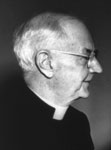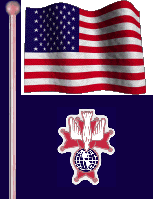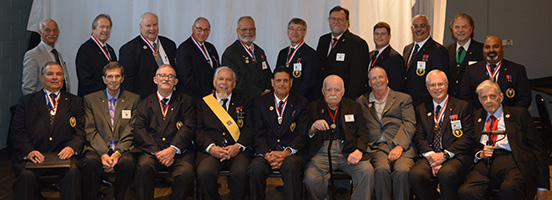Samuel Alphonsius Stritch (August 17,
1887—May 27, 1958) was an American Cardinal of the Roman
Catholic Church. He served as Archbishop of Chicago from
1940 to 1958 and as Pro-Prefect of the Sacred Congregation
for Propagation of the Faith from March 1958 until his death
later that year. He was elevated to the cardinalate by Pope
Pius XII in 1946.
Early Life and Education
Samuel Stritch was born in Nashville,
Tennessee, to Garret (1841-1896) and Katherine (nee
O'Malley) Stritch. His mother emigrated to the United States
from Ireland with her parents at a young age, and settled in
Louisville, Kentucky, where the family ran a boarding house.
His father came to Louisville from Dublin in 1879, boarded
with the O'Malleys, and married Katherine in 1880. Garret
later worked as the manager of Sycamore Mills, a subsidiary
of DuPont, in Nashville. The second youngest of eight
children, Samuel had two brothers and five sisters.
Considered something of a child prodigy, he finished grammar
school at age 10 and high school at 14. In 1901, he entered
St. Gregory's Preparatory Seminary in Cincinnati, Ohio, from
where he obtained a Bachelor of Arts degree in 1903. Bishop
Thomas Sebastian Byrne then sent Stritch to study at the
Pontifical Urbanian Athenaeum De Propaganda Fide in Rome,
where he resided at the Pontifical North American College.
He later earned his doctorates in philosophy and in
theology. While in Rome, he also befriended Eugenio Pacelli,
who later became Pope Pius XII.
Priesthood
Stritch was ordained to the priesthood by
Cardinal Pietro Respighi on May 21, 1910, at the Lateran
Basilica. At age 22, he was below the age requirement for
ordination but was granted a dispensation by Pope Pius X,
who said, "[Stritch] is young in years but old in
intelligence. Let him be ordained."
Upon returning to the United States, he did pastoral work in
the Diocese of Nashville. He served as pastor of St.
Patrick's Church in Memphis from 1911 to 1913, whence he
became private secretary to Bishop Byrne. Stritch was named
diocesan chancellor in March 1917, and a Domestic Prelate of
His Holiness on May 10, 1921.
Episcopal Career
Bishop of Toledo
On August 10, 1921, Stritch was appointed the second Bishop
of Toledo, Ohio, by Pope Benedict XV. He received his
episcopal consecration on the following November 30 from
Archbishop Henry K. Moeller, with Bishops John Baptist
Morris and Thomas Edmund Molloy serving as co-consecrators.
At age 34, he was the youngest bishop in the United States
at the time.
During his tenure in Toledo, Stritch established Mary Manse
College in 1922 and the diocesan Catholic Charities in 1923.
He also oversaw the beginning of the construction of Holy
Rosary Cathedral, whose cornerstone was laid by Janos
Cardinal Csernoch in 1926.
Archbishop of Milwaukee
Following the death of Sebastian Gebhard
Messmer, Stritch was named the fifth Archbishop of
Milwaukee, Wisconsin, on August 26, 1930. He suffered from
periods of depression early in his tenure, but joined
nationwide feelings of optimism with the 1932 election of
Franklin D. Roosevelt. Stritch was active in providing
support to the victims of the Great Depression. It was
because of the Depression that he refused to restore either
the Cathedral of St. John the Evangelist, which was heavily
damaged by a fire in 1935, or St. Francis Seminary.
Stritch was an advocate for Catholic Action and the Catholic
Youth Organization. An opponent of the controversial Rev.
Charles Coughlin, he once wrote a letter to a Milwaukee
rabbi in which, making an implicit reference to Coughlin,
the Archbishop rebuked those who "gain and hold a popular
audience, degrade themselves and abuse the trust reposed in
them by misquoting, half-quoting, and actually insinuating
half-truths." In November 1939, he was elected chairman of
the National Catholic Welfare Conference, the predecessor of
the United States Conference of Catholic Bishops. He also
served as vice-chancellor of the Extension Society.
Archbishop of Chicago
Despite Stritch's protests, Pope Pius XII
appointed him the fourth Archbishop of Chicago, Illinois, on
December 27, 1939. Succeeding the late Cardinal George
Mundelein, Stritch was formally installed on January 3,
1940. He was the personal choice of Apostolic Delegate
Amleto Giovanni Cicognani for the post, although President
Roosevelt was reputed to have wanted Bishop Bernard James
Sheil instead.
Pius XII created him Cardinal Priest of Sant'Agnese fuori le
mura in the consistory of February 18, 1946. As Archbishop,
Stritch oversaw the establishment of the first American
chapter of the organization Opus Dei, the launching of the
Christian Family Movement, and an outreach to the Puerto
Rican community.[8] In July 1954, he issued a pastoral
letter exhorting Illinois Catholics to abstain from the
assembly of the World Council of Churches at Evanston,
writing, "The Catholic Church does not...enter into any
organization in which the delegates of many sects sit down
in council or conference as equals...She does not allow her
children to engage in any activity...based on the false
assumption that Roman Catholics, too, are still searching
for the truth of Christ," to the dismay of several
Protestant and ecumenical figures. However, earlier in 1943,
Stritch attended a peace program held by Protestant,
Catholic, Eastern Orthodox, and Jewish leaders.
Pro-Prefect of the Congregation for the
Propagation of Faith
On March 1, 1958, he was appointed
Pro-Prefect of the Sacred Congregation for the Propagation
of Faith, thus becoming the first American to head a
dicastery of the Roman Curia. As Pro-Prefect, Stritch
directed the Church's missionary efforts. In May that same
year, a blood clot required the Cardinal's right arm to be
amputated above the elbow. Following the operation, he
suffered a stroke on May 18, and died eight days later, at
age 70.
After lying in state at the North American College and the
Cathedral of the Holy Name, he was interred in the Bishops'
Mausoleum at Mount Carmel Cemetery in Hillside on June 3.
Legacy
Cardinal Stritch University in Milwaukee is named for him,
as are Cardinal Stritch High School in Oregon, Ohio, a
junior and senior high school in Keokuk, Iowa, and Loyola
University Chicago's school of medicine.
|











 Login Status
Login Status 